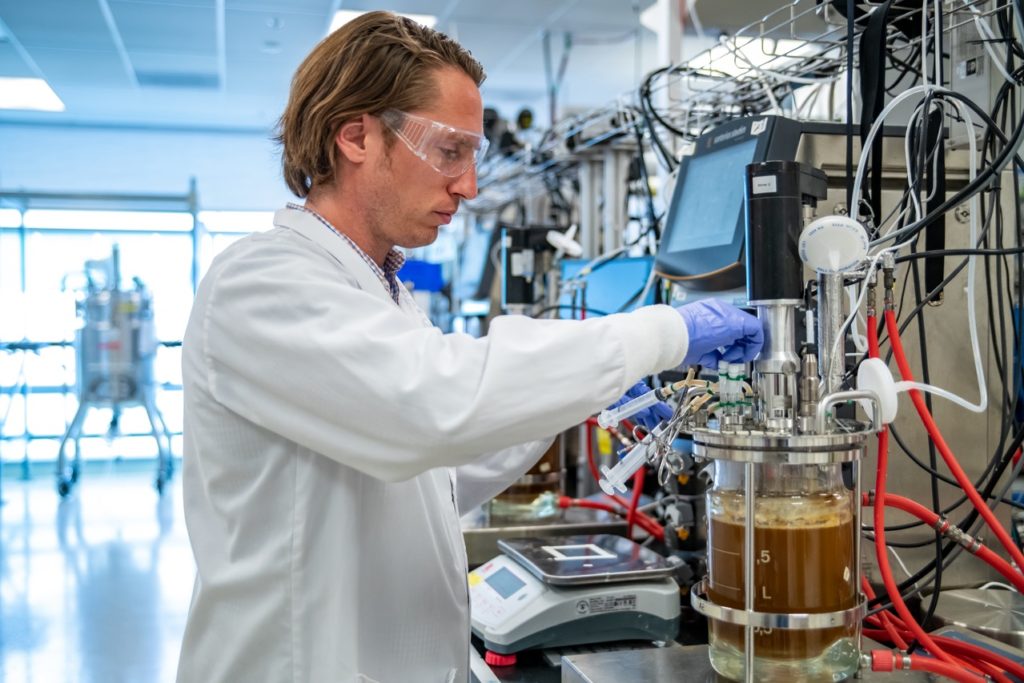Materials Handling & Solids Characterization
Achieving the best process economics.
Our ultimate goal is to optimize processes to avoid problems during scale-up. During downstream processes, we focus on the specific structures and properties of the materials with consideration for potential end-user applications. This approach not only ensures quality control, but also helps us develop the most economical processes.
High Solids Loading
Solids handling is one of the key risk factors in scale-up operations. It is critical to have a thorough understanding of the biomass flow properties under various unit operations to evaluate the requirements for mixing and handling techniques with high solid loadings.

Robust Process Design
At ABPDU, we utilize extensive rheological analysis to design scalable processes. The information we obtain helps us balance process economics and product quality.
- Is a fed batch process better than a batch process?
- What is the optimal particle size?
- Can you reduce capital expenditure by using smaller reactors?
- What type of pump can we use and what would be its specification?
Materials Characterization & Solids Handling Options
Measuring Viscosity
Increasing the concentration of the biomass solids during biochemical conversion has a large potential in reducing production costs. These concentrated biomass slurries have highly viscous, non-Newtonian behavior that poses several technical challenges to the conversion process.
Understanding Solids to Liquids Behavior
The reduced presence of water content exponentially increases viscosity of biomass slurries, presenting significant mass transfer challenges and negatively affecting the efficacy of catalysts. As biomass is hydrolyzed, the absorbed water is released into the resulting aqueous phase, followed by a drop in viscosity. However, in very low moisture conditions, the biomass behaves like a powder, making the application of enzymes challenging. Understanding changes in rheology of high solid slurries provides useful insights to improve polymer breakdown and sugar production.
Optimizing Enzyme Activity at High Solids Loading
Enzymatic hydrolysis at high solids loadings is key to the scale-up of biochemical conversion processes because of potentially higher sugar and ethanol titers and low hydraulic loads. However, high solids loading can result in lower conversion of glucan and xylan into fermentable sugars. We use rheology data to optimize enzyme dosage and timing to achieve a highly productive saccharification process.